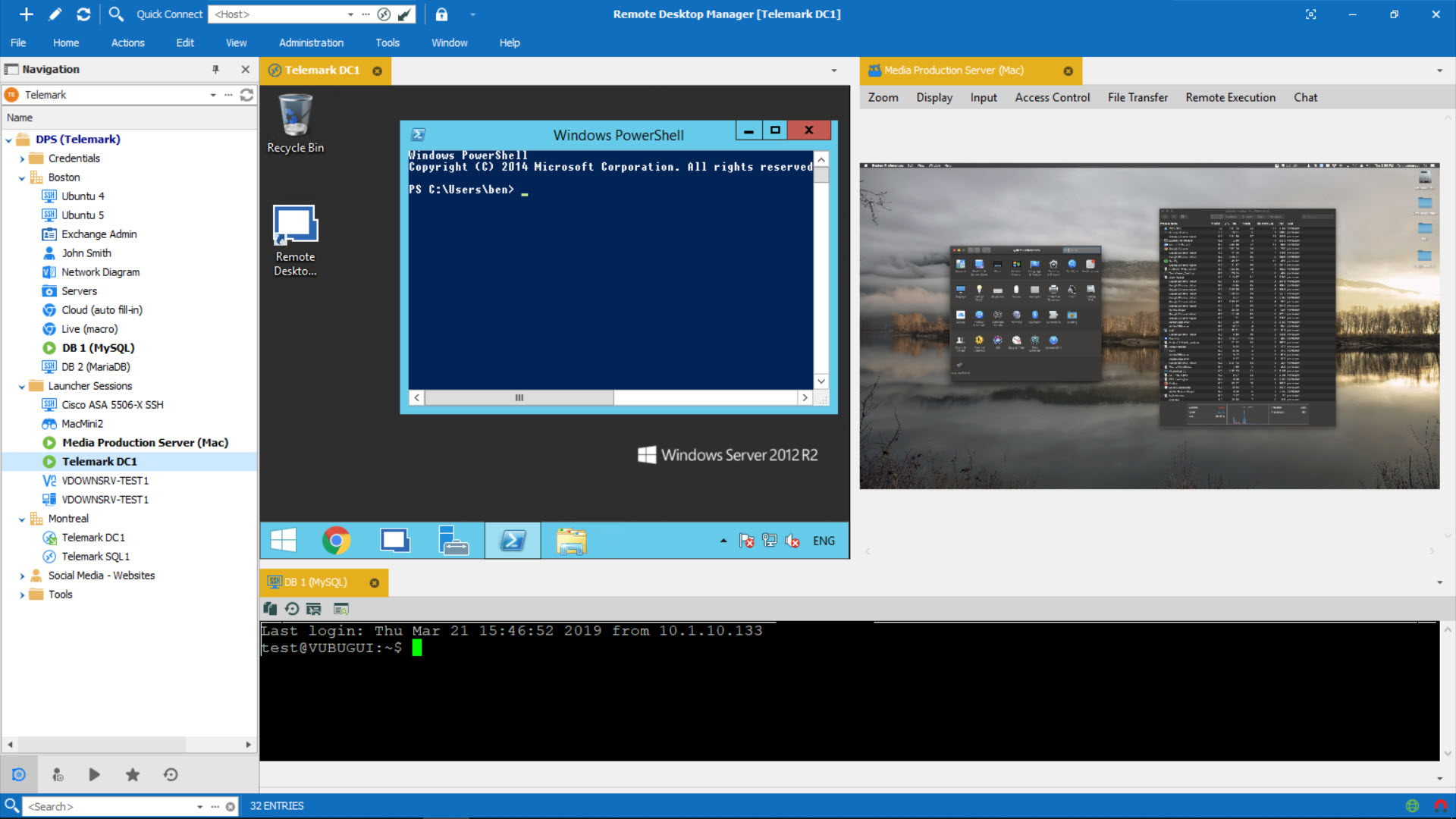

- #Vnc for mac using administrator how to
- #Vnc for mac using administrator mac os x
- #Vnc for mac using administrator pro
- #Vnc for mac using administrator password
- #Vnc for mac using administrator download
#Vnc for mac using administrator pro
Today I only keep it aroundįor some old Win2000 Pro machines I still have to administer. I started building it down when W2K server came with a remote administration mode, because RDP is way more efficient with bandwidth.

I've been a VNC addict too, way back in NT4. If you have any info websites you could point me to, I'd appreciate it.

#Vnc for mac using administrator how to
I'll look up someĪdditional info on RDC and how to get it to work properly. I've also got Hamachi running too on everyone's machine. I think my problem now is that I have tried RDC, but cannot get it to work since all of us are in separate locations behind Thanks for the explanation, I think I may prefer to use RDC in certain instances. *** Email address is removed for privacy *** wrote: If there is such a problem, it must be dealt with promptly. There is something besides an issue with VNC causing the privilege elevation issue. But I think you should test RDP from a local point first to find out for certain whether or not > Luc is especially correct in saying that a VPN solution is going to be safer than simply forwarding ports. > participation can be useful in a remote session - just never in the particular case of the system I admin currently. That was just my admin paranoia creeping in there. > I wasn't thinking about Remote Assistance because I was reacting to Don's expressed concern about users seeing what he was doing and (potentially) having to be prompted and given an admin password. > I agree strongly with everything Luc has said. > Thanks again for the lively discussion. So I'm looking into trying to use Hamachi as a VPN and There are indeed times when I don't care to have the other person know or see what I'm doing, but in other cases, I need to show Please feel free to leave your comments and questions in the comments portion of this post.> Thanks LeftFoot and Luc, both of you have given me lot's to think about. I hope that you found this article useful.
#Vnc for mac using administrator mac os x
Today we learned a couple solid, reliable mechanisms for establishing a remote administration connection to a Mac OS X computer. Remote Mac OS X desktop session from Windows Conclusion ^ The following screenshot shows a VNC session between a Windows XP workstation and a Mac OS X Lion computer: I myself use TightVNC because of its robust support for add-ons. Several quality VNC clients for Windows are available: If we want to establish a remote desktop session to a Mac OS X computer, the VNC protocol is probably our best option. Of course, once we have authenticated to the Mac, we can issue shell commands as if we had a local Terminal session open on the computer. Remote Mac OS X Terminal session from Windows In the screen output you see (a) the connection and authentication process (b) a run of pwd to test that we are in fact connected to a Mac and (c) authentication as the root superuser. The following image shows a PuTTY-based SSH connection to a remote Mac OS X computer. NOTE: Technically, we could use the built-in Telnet client in Windows to establish to the Mac OS X Telnet server, but as we both know, this protocol is hideously unsecure.

Both are easy to use, and accomplish the same goal. I would suggest that you try either OpenSSH or PuTTY.
#Vnc for mac using administrator download
Thus, we will have to download an SSH client. Unfortunately, Microsoft has never (repeat: never) included built-in support for this vendor-neutral, open-source protocol in its operating systems. We can use a Secure Shell (SSH) client in Windows to establish a secure remote Terminal connection to our target Mac OS X computer. You may need to take this information into account when firewalls and Internet connections are involved. NOTE: VNC uses TCP port 5900 and SSH uses TCP port 22 by default.
#Vnc for mac using administrator password
Supply a strong password and click OK to complete the configuration.Įnabling incoming VNC connections in Mac OS X To enable the VNC server, select Remote Management and then press Computer Settings….A drop-down pane appears in which we can select VNC viewers may control screen with password. 🙂Įnabling inbound SSH connections in Mac OS X In the screenshot below, "uwarnti" refers to the currently logged on Mac user, and the IP address is, well, the IP address. The status area at right helpfully informs us of our SSH connection string. To turn on the SSH server, enable Remote Login. On your Mac OS X computer, open the Sharing System Preferences pane. Thus, we have immediate, “out of the box” remote connectivity to our Mac boxes. The good news is that Mac OS X (both the server and desktop varieties) include built-in File Transfer Protocol (FTP), Secure Shell (SSH), and Virtual Network Computing (VNC) servers.


 0 kommentar(er)
0 kommentar(er)
